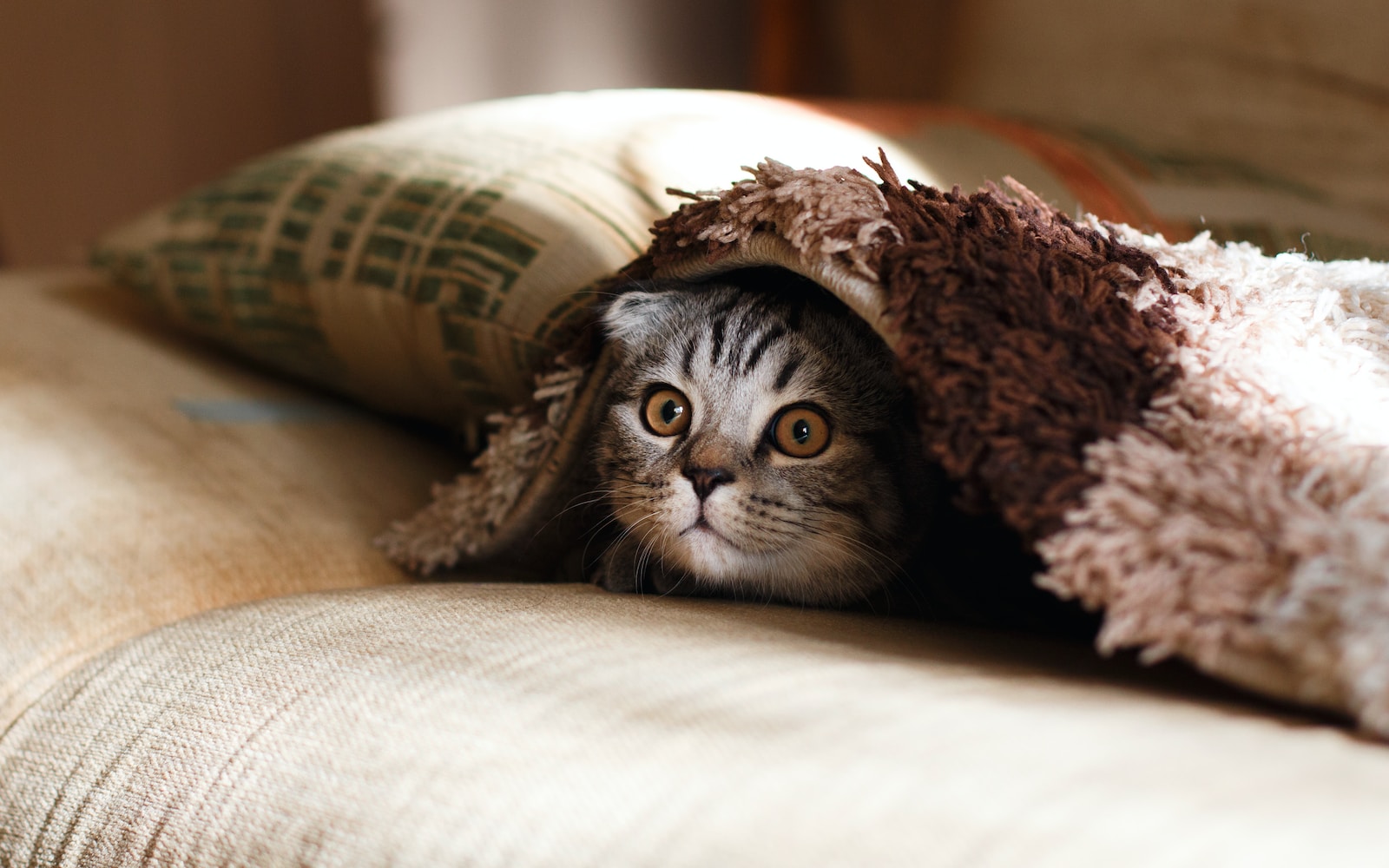Feline Resilience: Unraveling the Intriguing Immunity of Cats
Observing our feline companions meticulously groom themselves and effortlessly use their litter boxes often sparks curiosity about the remarkable resilience of these creatures. As humans, we navigate a world teeming with viruses and potential pathogens, yet cats appear to glide through life seemingly unscathed by these invisible threats. This prompts a compelling question: How do cats manage to maintain such robust health in the face of potential hazards? In this article, we embark on a scientific exploration to unveil the extraordinary immune system and grooming behaviors that equip cats with their unique defenses against viral onslaughts.

One of the most captivating aspects of feline behavior is their rigorous self-grooming ritual. With lithe movements and agile tongues, cats meticulously cleanse themselves, leaving their fur immaculate. This process extends beyond mere vanity; it serves as a vital component of their overall well-being.
Cat Salivary Defense Mechanisms
The saliva of cats is a reservoir of potent natural defenses that play a crucial role in their immune system. Among the remarkable components found within feline saliva are lysozymes, enzymes that exert a formidable antimicrobial effect. Lysozymes work by catalyzing the breakdown of bacterial cell walls, a process known as hydrolysis. This action is particularly effective against a broad spectrum of bacteria, rendering them vulnerable to subsequent elimination. Furthermore, cats’ saliva contains an array of proteins endowed with antiviral properties. These proteins serve as an additional layer of defense against potential pathogens. They work by targeting specific aspects of viral particles, inhibiting their ability to infect host cells or replicate. This intricate mechanism significantly reduces the likelihood of infections that may otherwise arise from their grooming habits. The combined action of lysozymes and antiviral proteins in feline saliva creates a potent biological shield. This shield not only aids in maintaining the oral health of cats but also extends to provide protection against potential pathogens present on their fur or skin. As cats groom themselves, they effectively deploy this innate defense mechanism, reinforcing their resilience against microbial threats. It is worth noting that the presence of these antimicrobial agents in feline saliva is an evolutionary adaptation. It is finely tuned to the ecological niche and behavioral habits of cats. This natural defense system has evolved over millennia, equipping them with a powerful biological arsenal that contributes significantly to their overall health and well-being. Understanding the intricacies of feline saliva underscores the remarkable adaptability and efficiency of nature’s designs in safeguarding the health of our beloved feline companions.
Cat Litter Box Etiquette: A Hygienic Triumph
The meticulous litter box habits exhibited by cats are a testament to their inherent need for cleanliness and territorial maintenance. These behaviors are deeply ingrained in their evolutionary instincts, serving multiple vital functions. One primary purpose is to minimize the risk of attracting potential predators or rivals through the scent of their waste. By diligently burying their excrement, cats effectively conceal any trace that may disclose their presence to would-be threats. Furthermore, this behavior also serves as a form of territory marking. By carefully covering their waste, cats establish a clear delineation of their space, signaling to other cats in the vicinity that the area is claimed. This territorial assertion is crucial for their sense of security and dominance in their environment. The prevalence of indoor litter boxes in domesticated settings further contributes to the maintenance of their hygiene and reduces their exposure to external pathogens. Indoor litter boxes provide a controlled and sanitary environment for cats to carry out their elimination behaviors. This controlled environment significantly mitigates the risks associated with outdoor exposure, such as contact with potentially contaminated soil or vegetation.
The Impressive Immune System of Cats
Cats are endowed with an immune system of remarkable sophistication, characterized by the synergistic operation of both innate and adaptive mechanisms. The innate immune system constitutes the first line of defense, deploying rapid and non-specific responses against a diverse array of pathogens. Among the key components of this innate defense are complement proteins, which enhance the opsonization and lysis of foreign invaders. Neutrophils, specialized white blood cells, play a pivotal role in phagocytosis, engulfing and neutralizing pathogens. Additionally, natural killer cells exert cytotoxic effects on infected or aberrant cells, aiding in the early containment of infections. Simultaneously, the adaptive immune system, a more intricately regulated arm of the immune response, orchestrates specialized and highly targeted actions against specific pathogens. This system is characterized by the involvement of T and B lymphocytes, which confer immunological memory and specificity. T cells coordinate cellular immunity, recognizing and directly interacting with infected cells or pathogens. B cells, on the other hand, differentiate into plasma cells and produce antibodies, which act as molecular beacons for the immune system to identify and neutralize specific pathogens. This process of adaptive immunity culminates in the development of immunological memory, conferring long-lasting protection against recurrent encounters with the same pathogen. The dynamic interplay between the innate and adaptive immune systems equips cats with a formidable defense against a spectrum of potential threats. The innate response provides swift and immediate protection, while the adaptive response ensures a highly specific and targeted countermeasure against recognized pathogens. This sophisticated immune architecture is a testament to the evolutionary adaptations that have equipped cats with the means to navigate a world fraught with microbial challenges. Understanding the intricacies of feline immunology not only deepens our appreciation for their biological resilience but also underscores the importance of tailored healthcare to support their immune health.
Cat resistance to some human viruses
Cats demonstrate a notable degree of resistance to certain human viruses, a phenomenon that has piqued scientific interest. Although they can serve as carriers for viruses like the common cold, cats typically do not display overt symptoms or succumb to illness from these infections. This intriguing observation stems from the distinctive interplay between the feline and human immune systems when encountering specific viruses. The resistance of cats to some human viruses can be attributed to a combination of factors. First and foremost, the biological architecture of their immune system, while differing from the human immune system, equips them with specialized defenses against certain pathogens. This innate resistance is a product of evolutionary adaptations that have shaped their immune responses over time. Furthermore, the cellular receptors present on the surface of feline cells may not always align with the receptors targeted by human viruses. This misalignment creates a level of natural resistance, limiting the virus’s ability to enter and replicate within feline cells. In essence, the unique cellular landscape of cats serves as an additional barrier against certain human viruses.
It is essential to note that while cats may not exhibit symptoms of illness, they can still act as carriers of these viruses, potentially transmitting them to other individuals. This underscores the importance of responsible pet ownership, including regular veterinary check-ups and vaccinations, to safeguard both feline and human health.
In short
The feline immune system, coupled with their instinctual grooming behaviors and meticulous litter box habits, forms a formidable defense against viral threats. Cats’ exceptional adaptations allow them to navigate a world teeming with potential pathogens with remarkable resilience. Understanding the intricate interplay between their biology and behavior not only enriches our appreciation for our feline companions but also underscores the importance of providing them with a safe and hygienic environment. Through these insights, we gain a deeper understanding of the fascinating world of feline immunology and the remarkable creatures that share our homes.






